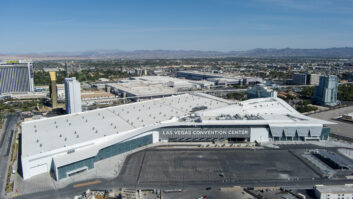In the November 2009 issue of Radio World’s international edition, the question was asked: “Is the Canadian Association of Broadcasters Doomed?” The headline might have seemed hyperbolic at the time, but the answer has proven to be yes.
On June 1, 2010, the CAB was officially disbanded.
“The last thing our industry needs at this point is this kind of disorganization,” said Elmer Hildebrand, president/CEO of Golden West Broadcasting (a radio group owner/operator in the Canadian Prairie provinces) and the current CAB chairman. “This is nothing less than a tragedy for Canadian commercial radio and TV.”
The CAB’s demise stills a once-powerful voice in Canadian commercial radio/TV broadcasting. For decades, the CAB spoke with a unified voice for private broadcasting in the Canadian halls of power – and what it had to say was heard and taken into account.
Ironically, the CAB’s demise has not caused by any loss of external political clout. Instead, the lobby group was destroyed by its own members.
Roots
The year was 1925. Radio was still relatively new in Canada — only about 40 stations were in operation — and those that were in existence were not required to pay royalties for airing recorded music.
Unfortunately for the broadcasters, the free ride ended when the government added radio to an updated Copyright Act. The result: “Station CKNC in Toronto was threatened with legal action if copyright fees were not paid,” according to the CAB website.
Sensing a common threat, radio station owners met in Montréal on 7 January 1926. “The entire discussion was about copyright. They agreed they would probably have to pay — the question was how much?”
The Canadian Association of Broadcasters was born at this meeting. Its first general meeting was subsequently held at Toronto’s King Edward Hotel on 28 January 1926.
This was the genesis of an industry lobby group that first fought on the copyright issue, then rallied listeners to prevent the federal government from abolishing commercial radio in favor of the public-service broadcaster, Canadian Broadcasting Corp. (CBC).
With the advent of private television in 1960 (public-service television launched in 1952), the CAB incorporated commercial TV broadcasters into its fold; followed by cable/satellite TV service providers in the 1980s and 1990s.
By the turn of the 21st century, the CAB included companies that owned extensive cable and satellite TV properties; because these companies had bought radio and TV stations as part of their vertical integration strategies.
This brings us to January 2010: On paper, the CAB was a powerhouse representing everyone who was anyone in Canadian broadcasting, save for the publicly funded CBC radio and TV operations. In reality, CAB was on the verge of disintegration.
What went wrong?
As was reported in November 2009, the issue that splintered the CAB was a fight between its TV broadcasting and cable/satellite TV members over “fee-for-carriage.”
The TV broadcasters were demanding cable/satellite TV companies pay for relaying free over-the-air signals to their subscribers. The cable/satellite TV companies held firm against this demand, complaining that compensating over-the-air broadcasters would increase subscriber fees by up to $10 a month.
In the past, CAB members would have sorted out their differences quietly behind closed doors, and then presented a unified, compromise policy to the Canadian Radio-Television and Telecommunications Commission (CRTC).
But this time was different: Focused on narrow interests, both sides took to the airwaves, running one-sided TV attack ads that attempted to resolve the battle through brute PR force.
The divisive viciousness of these ads destroyed whatever little consensus was left in the CAB. As a result, when the CRTC recently held hearings on the fee-for-carriage issue — as important now to broadcasters as the royalty fight had been in 1926 — the CAB didn’t even take part in the discussions.
“The CAB was so divided, that the members simply could not come up with a common position that it could present to the CRTC,” said David Bray, a Toronto-based radio analyst and partner in Hennessy & Bray Communications. “If anything, the CAB should have been leading on this issue, which is of paramount importance to its members. Instead, it was nowhere to be seen.”
“The CAB’s strength came from its common purpose,” said Ian Morrison, spokesperson for the Friends of Canadian Broadcasting, a pro-public broadcasting citizens’ group that had long clashed with the pro-private broadcasting CAB.
“As the CAB expanded its membership, it diluted that consensus. By the time the fee-for-carriage issue came up, the common purpose had evaporated,” said Morrison. “Without it — plus the fact that cash-strapped members had better uses for their money than paying their CAB membership dues — there was no reason for the CAB to exist anymore.”
Fallout
The CAB’s demise is bad news for the country’s private broadcasters. No longer do they have a common front for responding to various CRTC policy initiatives, many of which promote Canadian cultural goals at the broadcasters’ expense.
“The once-united CAB members have dissolved into a bunch of feuding broadcast barons, having to strike ad hoc said alliances on whatever issue might confront them,” said Morrison. “They’re now divided and easy to pick off one at a time.”
The lack of a common front worries Elmer Hildebrand, who has been trying to salvage a radio-only organization from the wreckage of the CAB.
“Allowing the CAB to fail was extremely short-sighted,” he said. “It’s imperative that the radio, TV and specialty industries speak with a single voice that can deal with the CRTC.”
On the radio side, David Bray worries about the impact on Canadian radio, which has been unsuccessful in making the move to digital broadcasting.
“The CAB spearheaded efforts to launch DAB in Canada in the 1990s,” he said. “So far that hasn’t worked, and now there is no plan nor money committed to fix the problem or to replace DAB with the U.S. IBOC standard or anything else.”
What Bray fears is the eventual extinction of Canadian commercial radio.
“We can’t go on with analog AM and FM forever; not when iPhones and other forms of digital media are grabbing younger listeners,” he said. “But with the CAB gone, all that’s left are private broadcasters protecting their profit margins by cutting costs. They are focused on short term P&L goals and aren’t prepared to spend money on a digital solution for the future of the medium.”
This may prove to be the sad legacy of the CAB’s demise, unless Hildebrand succeeds in creating a radio-only lobby group. Both Bray and Morrison believe he will not succeed, because the same divisive companies who broke up the CAB also own most of the country’s radio stations.
“Now that the CAB is gone, no one is looking out for the long-term future of Canadian radio,” said Bray. “No one’s in charge, even though leadership is as necessary now as it was in 1926.”










